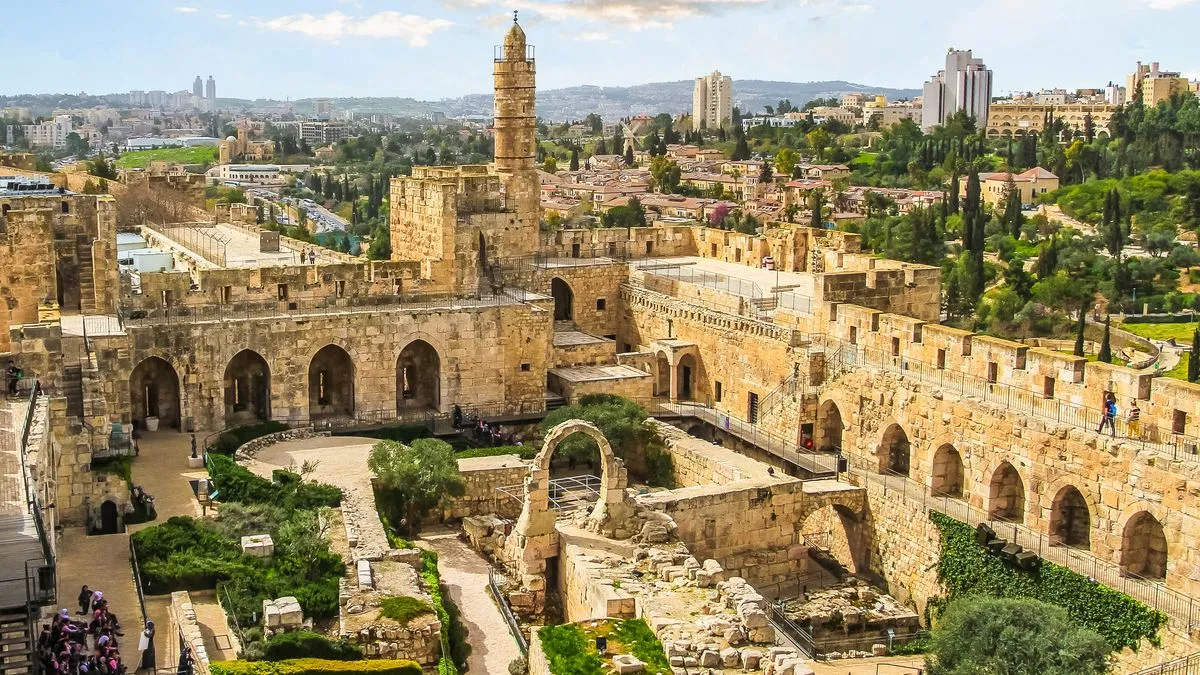How to spend your stopover in Jerusalem, Israel
Tuesday 15 March 2022

Jerusalem is one of the oldest and most significant cities in the history of the human race and a fascinating destination for anyone who gets the opportunity to visit. For many, making the pilgrimage here is of momentous religious importance as Jerusalem is a holy city in three major religions: Judaism, Christianity and Islam. However, even for those who do not follow a faith, the city’s long and rich history and significance in humanity should be draw enough to want to get under its skin.
Unsure how to spend your time in the city? We offer a guide on the best things to do in Jerusalem during a stopover on a premium cruise.
Western Wall and Tunnels
When it comes to must-see places in the city, the Western Wall in the Old City of Jerusalem is arguably the most prominent. Originally erected by Herod the Great in 19 BCE, the wall itself is significant in three major religions, but especially in Judaism. Due to its proximity to Temple Mount (and the restrictions on entry to the Temple), it’s thought of as the holiest place those who follow Judaism are permitted to pray and many make the pilgrimage in their lifetime to do so.
Bex, a blogger at The Ordinary Traveller and the author of Three Stripes South, a book about hiking the length of Israel, told us that visiting the Western Wall Tunnels which sits below this monument is her top recommendation: “Jerusalem is the most diverse and full city I’ve ever visited so it’s hard to pick just one recommendation. If I had to though, it would be visiting the Western Wall Tunnels. After hours spent in the winding streets and markets of the Old City, it's incredible to see the hidden side of Jerusalem and the tunnels that sit below.”
READ MORE: Lesser-known cruise destinations
Yad Vashem
As the centre of worship in Judaism, it’s only fitting that Jerusalem is also home to Yad Vashem – the World Holocaust Remembrance Center. Giving those who are coming here to explore their faith a way to pay their respects to the victims of the Holocaust, the large complex includes a selection of indoor exhibitions, monuments, reflective gardens and sculptures. Originally the museum was built as a dedication to those who didn’t follow the Jewish faith but helped in the fight to end the Holocaust. Entrance here is free, and for those who want to learn more about the impact of the Holocaust, there are few more educational places in the world.

Try the local food
For those who prefer to discover a new culture a different way, trying the local food is a great way to do so. If you want to enjoy a relaxed day and feel that historic sites might not be the right tone for your trip, why not spend the day doing a self-conducted food tour and learning more about Jerusalem and its culture through the food people eat?
This comes as the top suggestion by Hannah from Eat Sleep Breathe Travel: “While most people visit Jerusalem for the history, no visit to this city is complete without trying the local food as well. A visit to shuk MachaneYehuda; one of the best foodie destinations in the city. Visit Etrog Man for fresh and delicious acai bowls, Basher Fromagerie for the most delicious cheese sandwiches, or Jachnun Bar for malawach. Wash it down with a craft beer from Beer Bazaar and make sure to grab some rugelach from Marzipan Bakery to take away with you!”
READ MORE: Why a cruise is an affordable way to see the world
Israel Museum
We’ve already touched on how important Jerusalem has been during human history and a visit to the Israel Museum can help fill you in its importance and the many roles it’s played. Just like the city’s history, the Israel Museum is not insignificant at 50,000 square metres (and boasting a six-acre sculpture garden!) Here you can learn about human history from prehistoric times to modern-day, with a range of historic and art exhibitions to take in.
The most popular and well-known things to see here are the Dead Sea Scrolls which date back to between 3rd century BCE and 1st century CE and contain the oldest surviving manuscripts of books later included in the Bible. They are often thought of as one of the most important archaeological finds in history and, although broken up around the world, the Israel Museum is home to the majority of the collection.

Via Dolorosa
The processional route in Old Jerusalem, Via Dolorosa, is another site that’s worth visiting whilst you're in the city if you want to walk some of its history. The route itself is the path it’s believed Jesus walked as he journeyed to his crucifixion and as such, is of great religious significance.
Anda Galffy, a travel blogger at Travel Notes and Beyond told us more: “One of the most cherished places to visit in Jerusalem is Via Dolorosa. Also known as the Way of the Cross, Via Dolorosa is a processional route that represents the path that Jesus took on the way to his crucifixion.
“The route goes from Antonia Fortress to the Church of the Holy Sepulchre, with a distance of about 600 metres. The path is marked by the 14 Stations of the Cross, five of which are located inside the Church of the Holy Sepulchre. The stations signify events mentioned in the New Testament and the Christian tradition.
“Walking the Via Dolorosa is an inspirational journey that all visitors to Jerusalem should take, whether they are religious or not.”
How to spend your stopover in Jerusalem
Western Walls and Tunnels
Yad Vashem
Try the local food
Israel Museum
Via Dolorosa
Any Black Sea cruise holiday will be filled with amazing history, and your stopover at Jerusalem will be no exception to that. With these suggestions, you’ll be able to enjoy some of the best this city has on offer and get under the skin of this amazing destination.
For more tips, guides, and advice, make sure to visit our blog page.


